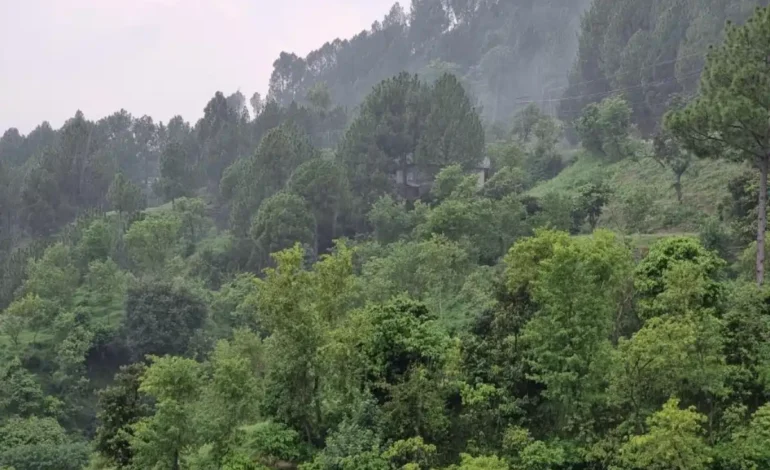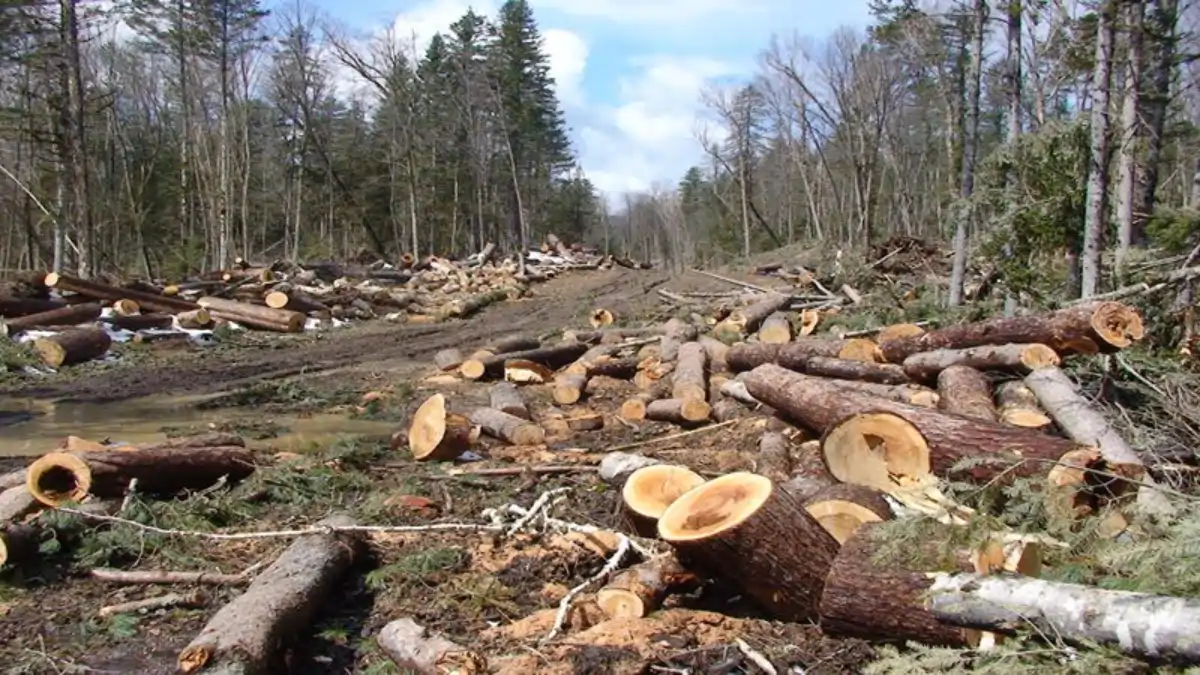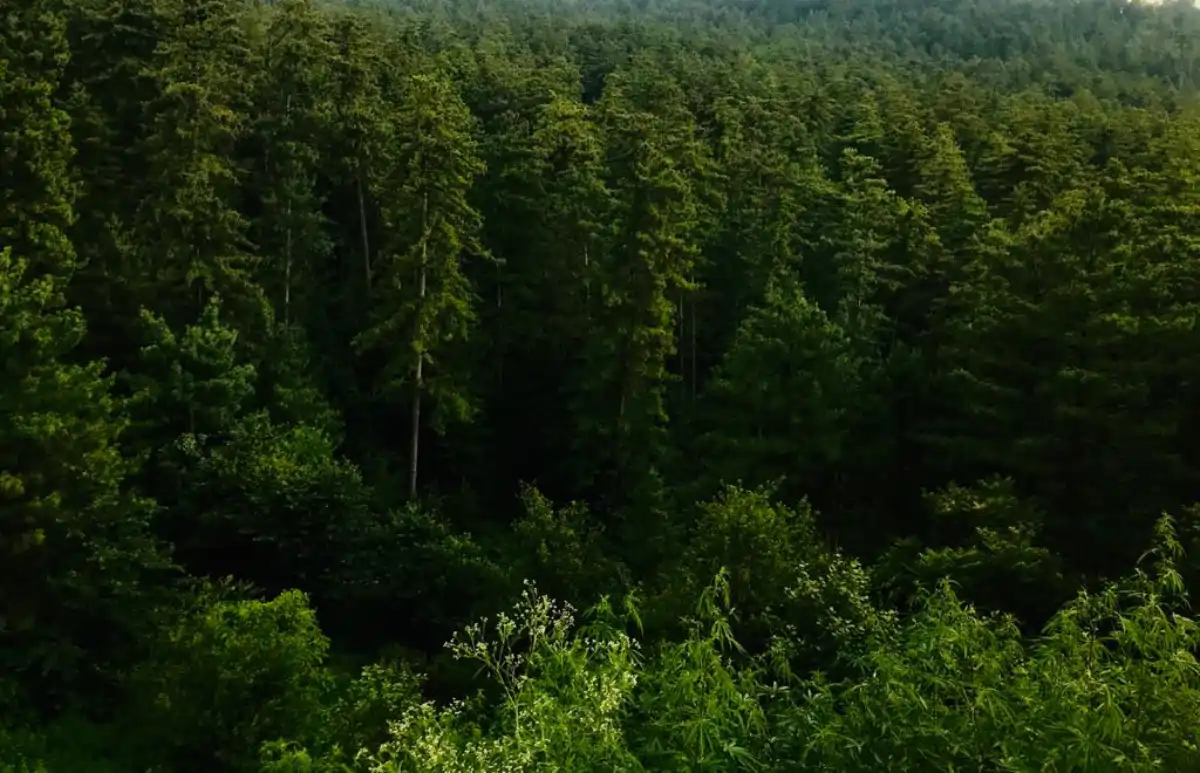
Forest Degradation for a Sustainable Future
Forest Degradation for a Sustainable Future: Azad Jammu & The stunning landscapes and rich biodiversity bless Kashmir (AJK), nestled in the majestic foothills of the Himalayas. The region’s forests, often
Forest Degradation for a Sustainable Future: Azad Jammu & The stunning landscapes and rich biodiversity bless Kashmir (AJK), nestled in the majestic foothills of the Himalayas.
The region’s forests, often referred to as “green gold,” are an invaluable asset. They are not only vital to the environment but also to the economy and the livelihoods of local communities. However, these forests face growing threats that threaten their sustainability, impacting everything from biodiversity to climate stability.
In this article, we’ll explore the state of forests in Azad Kashmir, identify the causes behind their degradation, and highlight the efforts made to preserve these precious ecosystems for future generations.
The Vital Role of Azad Kashmir’s Forest Degradation
Azad Kashmir is home to approximately 27% forest cover, with forests ranging from dense coniferous forests of pine, cedar, and fir to broadleaf species like oak. These forests provide essential services, playing a crucial role in maintaining ecological balance, regulating water cycles, preventing soil erosion, and providing habitat for diverse wildlife.
The forests also contribute significantly to the local economy. They supply timber, fuelwood, medicinal plants, and non-timber forest products, all of which support local livelihoods. In addition, Azad Kashmir’s forests help mitigate climate change by sequestering carbon, making them critical in the global effort to combat climate impacts. Tourism, which is a major industry in the region, also thrives due to the natural beauty of these forests, drawing visitors from around the world to experience Kashmir’s pristine landscapes.
The Growing Threats: What’s Causing Forest Degradation
While Azad Kashmir’s forests remain a crucial part of its heritage, they face several challenges that are contributing to their rapid degradation. These include illegal logging, urban expansion, and agricultural practices that put immense pressure on forest ecosystems.
1. Illegal Logging: A Silent Destroyer
Illegal logging is one of the most significant contributors to deforestation in Azad Kashmir. Despite regulations to control timber extraction, local communities often resort to illegal logging due to a lack of alternative energy sources, such as fuelwood for cooking and heating. Additionally, people often harvest and sell timber illegally for commercial purposes.
This unsustainable extraction of timber has led to significant loss of forest cover, especially in areas with easy access.

2. Urbanization: Encroaching on Forests
As urbanization accelerates, more forests are being cleared to make way for housing, infrastructure, and development projects. The growing demand for land in towns and cities puts pressure on nearby forests, leading to deforestation and fragmentation of ecosystems. This not only disrupts wildlife habitats but also contributes to the loss of biodiversity.
3. Urbanization: Encroaching on Forests
Agriculture is another major cause of deforestation in Azad Kashmir. As the population grows, there is an increasing demand for farmland. To meet this demand, forests are cleared for crops and grazing land. While agriculture is essential for food security, it comes at the cost of forest ecosystems. The conversion of forests into agricultural land leads to soil degradation, reduced water retention, and a decline in biodiversity.
The Ripple Effects: How Forest Degradation Impacts Azad Kashmir
The degradation of forests in Azad Kashmir has far-reaching consequences. The region’s rich biodiversity, climate stability, and overall well-being are at risk. Here’s how forest depletion is affecting the environment and local communities.
1. Loss of Biodiversity
Numerous plant and animal species, many of which are unique to the area, can be found in Azad Kashmir. These species, many of which are already fragile, lose their habitat when forests are destroyed. Due to the loss of their natural habitats, animals that depend on forest habitats, such as the Himalayan brown bear and the markhor, are in danger of going extinct. Additionally, non-timber goods and medicinal plants that are essential to local culture and health are disappearing as forest ecosystems decrease.
2. Accelerating Climate Change
Forests play a critical role in regulating the climate by absorbing carbon dioxide (CO2) and releasing oxygen. When forests are destroyed, they not only lose their ability to capture carbon but also release stored carbon into the atmosphere, contributing to global warming. The loss of forest cover also affects the local climate, leading to temperature fluctuations, altered rainfall patterns, and an increase in extreme weather events like flooding.
3. Soil Erosion and Water Shortages From Forest Degradation
Azad Kashmir’s forests play an essential role in preventing soil erosion, particularly in hilly regions. The roots of trees bind the soil, preventing landslides during the monsoon season. Without forests, the soil becomes loose and prone to erosion, leading to the loss of fertile topsoil and increased siltation in rivers and streams. Deforestation also disrupts the water cycle, leading to reduced water availability for drinking and irrigation. This could have severe consequences for agriculture and local communities who rely on these resources.
Conservation Efforts: Restoring the Green Gold From The Forest Degradation
To battle forest debasement and safeguard Azad Kashmir’s regular legacy, different preservation endeavors are in progress. Both the public authority and non-legislative associations are assuming dynamic parts in advancing feasible ranger service rehearses and safeguarding these fundamental biological systems.
1. Forest Protection From Forest Degradation and Afforestation Initiatives
The public authority of Azad Kashmir, alongside global accomplices, has sent off a few wood insurance programs pointed toward checking unlawful logging and advancing supportable lumber extraction. These endeavors are centered around fortifying the authorization of timberland insurance regulations and reestablishing corrupted regions through afforestation and reforestation programs. Local tree species, adjusted to the neighborhood environment and climate, are being planted to reestablish harmony and work on woodland cover.

2. Empowering Local Communities
Local communities are at the heart of forest conservation in Azad Kashmir. Many conservation programs emphasize community involvement in sustainable forestry practices. By engaging local people in eco-tourism, the sustainable harvesting of non-timber forest products, and community-based forest management, these programs help reduce the pressure on forests. Additionally, alternative livelihoods, such as beekeeping and herbal medicine, provide economic benefits while preserving the environment.
3. Awareness and Education
Raising awareness about the importance of forests is key to sustainable forest management. Local communities are being educated on sustainable land-use practices, such as agroforestry, which combines agriculture and forestry to maintain the health of both ecosystems and livelihoods. These awareness campaigns help people understand the long-term value of forests, fostering a sense of ownership and responsibility for their preservation.
4. Promoting Sustainable Agriculture
By reaching people who would not otherwise have access to healthcare, these health units are having a big impact. Long commutes, bad roads, and limited funds are some of the obstacles that can be removed when services can be provided directly to rural communities.
A Sustainable Future: Preserving Azad Kashmir’s Green Gold
Azad Kashmir’s forests are a priceless resource that must be protected at all costs. They are crucial to the environment, biodiversity, and the livelihoods of local communities. While illegal logging, urbanization, and agricultural expansion are a continuous threat to these vital ecosystems, ongoing efforts to restore and protect forests offer hope.
With continued government action, community involvement, and global support, Azad Kashmir can protect its green gold for future generations. By investing in conservation initiatives, promoting sustainable practices, and raising awareness, we can ensure that the forests of Azad Kashmir remain vibrant, resilient, and bountiful for years to come.
In a world confronting environmental change, the safeguarding of woods is as of now not simply a choice — it is a need. We should cooperate to safeguard the magnificence and biodiversity of Azad Jammu and Kashmir’s backwoods and secure a manageable future for this sublime locale.







